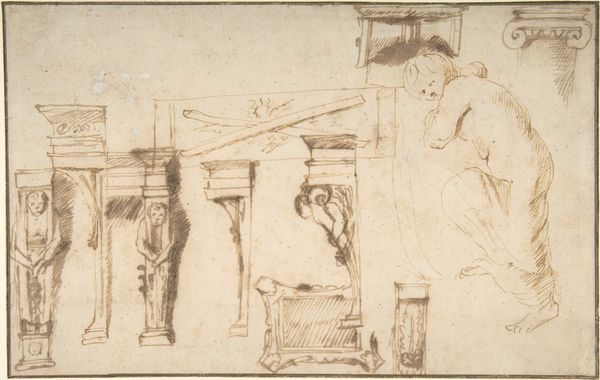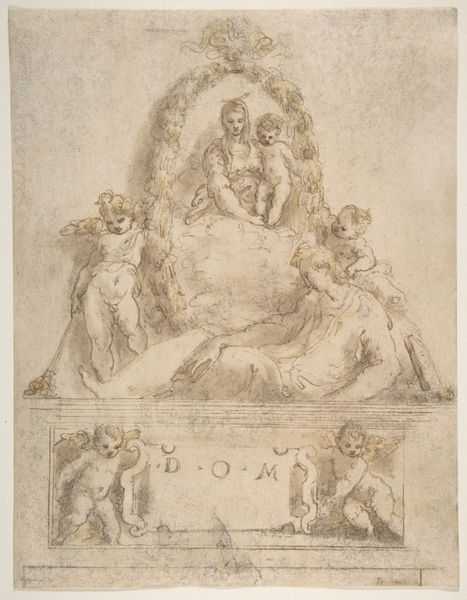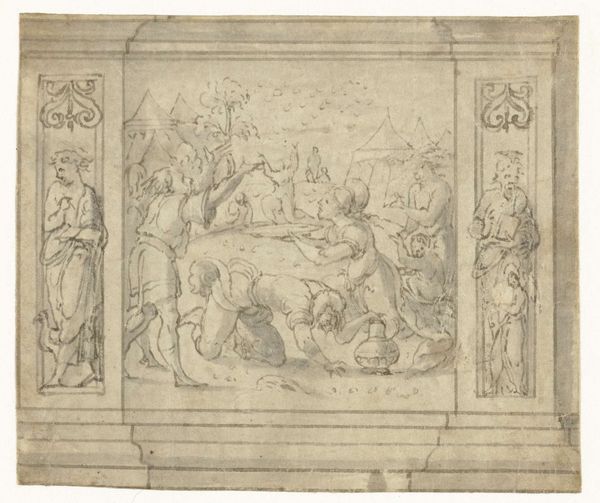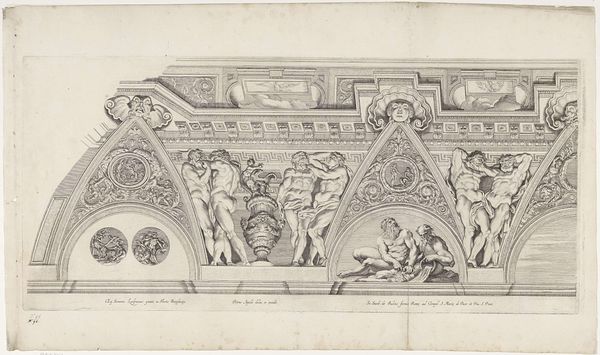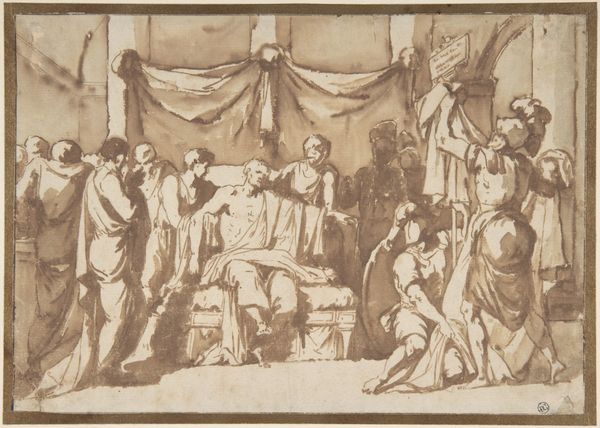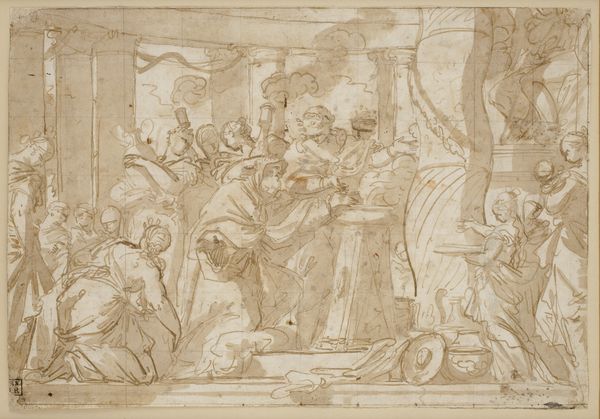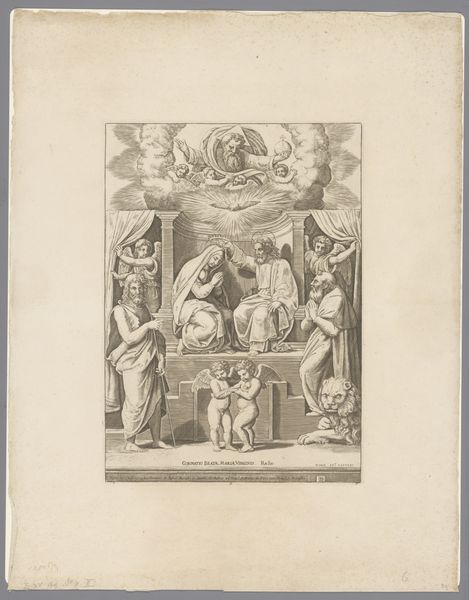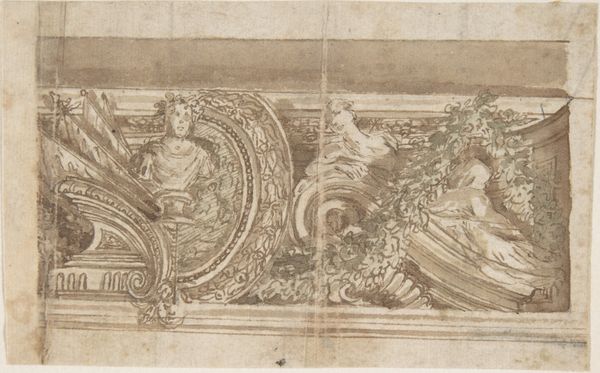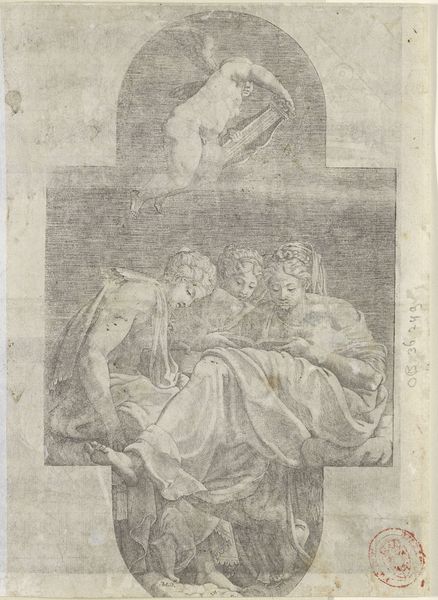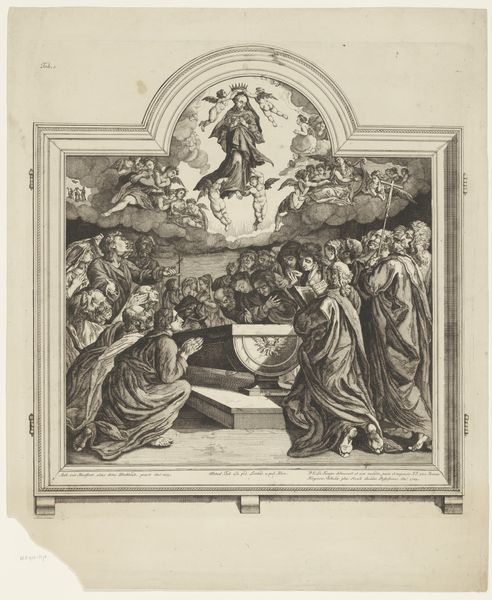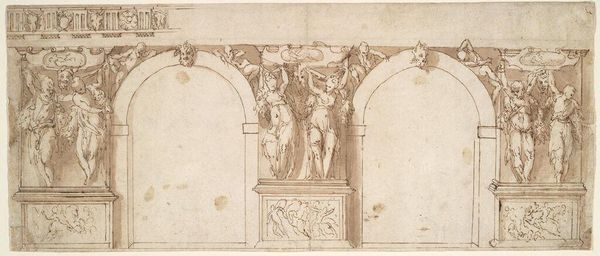
drawing, print, ink, pen
#
drawing
#
narrative-art
# print
#
charcoal drawing
#
figuration
#
11_renaissance
#
female-nude
#
ink
#
pen
#
history-painting
#
academic-art
#
italian-renaissance
#
male-nude
Dimensions: 6-3/4 x 10 in. (17.1 x 25.4 cm)
Copyright: Public Domain
Curator: Alright, let’s talk about this fascinating piece. It's titled "Frieze", dating back to the 16th century. We don’t know the artist; it's simply listed as anonymous. The artwork uses pen, ink and charcoal. Editor: Immediately, I'm struck by how... stagey it feels. The figures, predominantly nudes, seem to be arranged deliberately, almost posed within these constructed architectural frames. There's an air of solemnity about it, despite the nudity. It's not exactly inviting. Curator: The anonymity certainly lends a mystery to its purpose. I’m always intrigued by what historical currents might have shaped it. Perhaps it was a preparatory study, or a model intended for replication. Either way, the influence of Italian Renaissance classicism is strong. What would have influenced that choice in that society at that time? Editor: Absolutely. You can sense the echoes of antiquity, this obsession with idealized forms and stoic composure. But even though this academic adherence is impressive in craft and anatomical representation, the rigidity flattens my response. I long for the unconstrained; something that bursts forth! Curator: The public appetite for these classically inspired works drove artistic and scholarly development across much of the Italian peninsula and later into the continent, leading patrons, academics, and sometimes the artists themselves to become experts of antiquity and classicism. The nude human form in a scene of architectural features became synonymous with intellect and refinement. Editor: Which is powerful... to know how a drawing like this becomes shorthand for civilization itself, isn’t it? That a bunch of unclothed bodies can represent the highest aspirations of a culture? Curator: The artwork also demonstrates the evolving perception of art in a wider societal context. Drawings and prints, which would once have been primarily for functionary usage for architects and draftsmen, became desirable collecting items as their artistry gained value beyond pure utility. Editor: I wonder if that anonymous artist knew that a drawing they made, perhaps as just a preliminary study, would wind up here centuries later for us to dissect and ponder over. Kind of lovely and melancholic all at once. Curator: Absolutely. I always consider how socio-political environments affect art production; they serve to demonstrate shifting aesthetic criteria or highlight that art holds its significance through public interactions and the meaning attributed over time. Editor: So, this "Frieze", though cool in its way, ultimately feels less like a window into someone’s soul and more like a product of a very specific moment in history, which perhaps explains a few of my reservations. Curator: A snapshot, perfectly rendered, in ink and charcoal, of the 16th century. Thanks for unpacking all that, It does change how I see it now too.
Comments
No comments
Be the first to comment and join the conversation on the ultimate creative platform.
